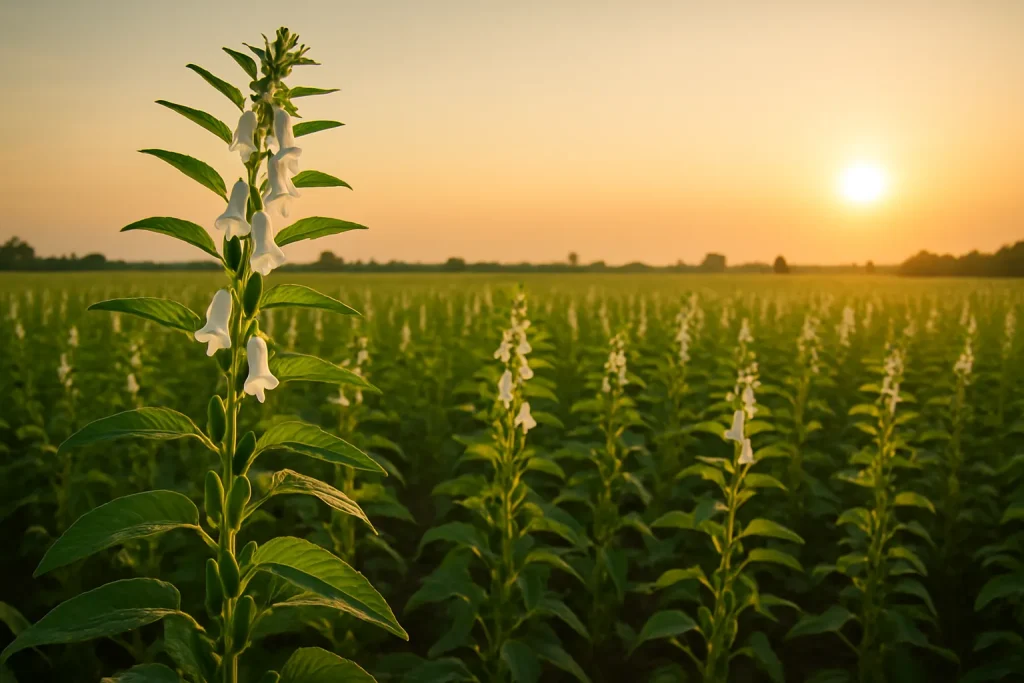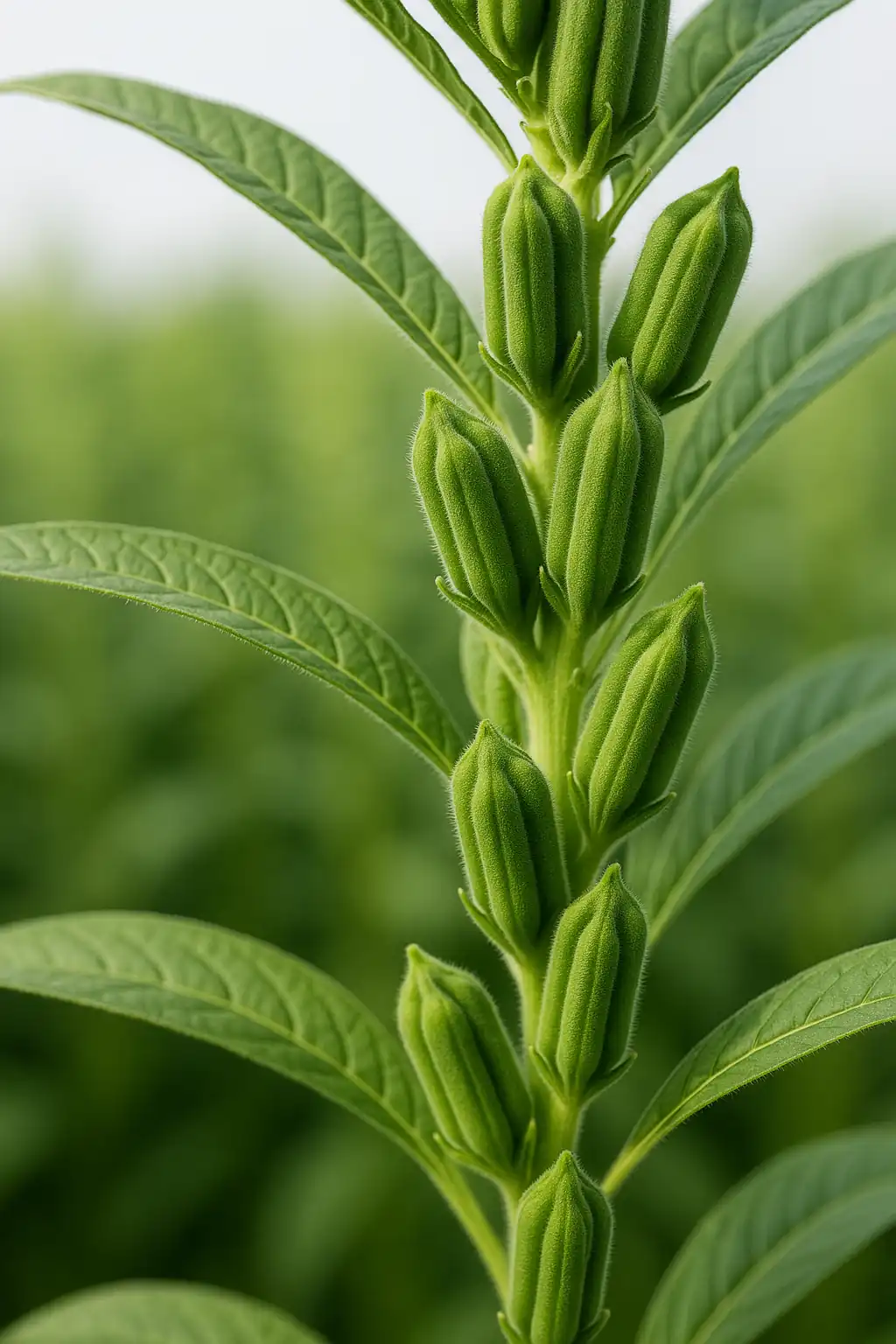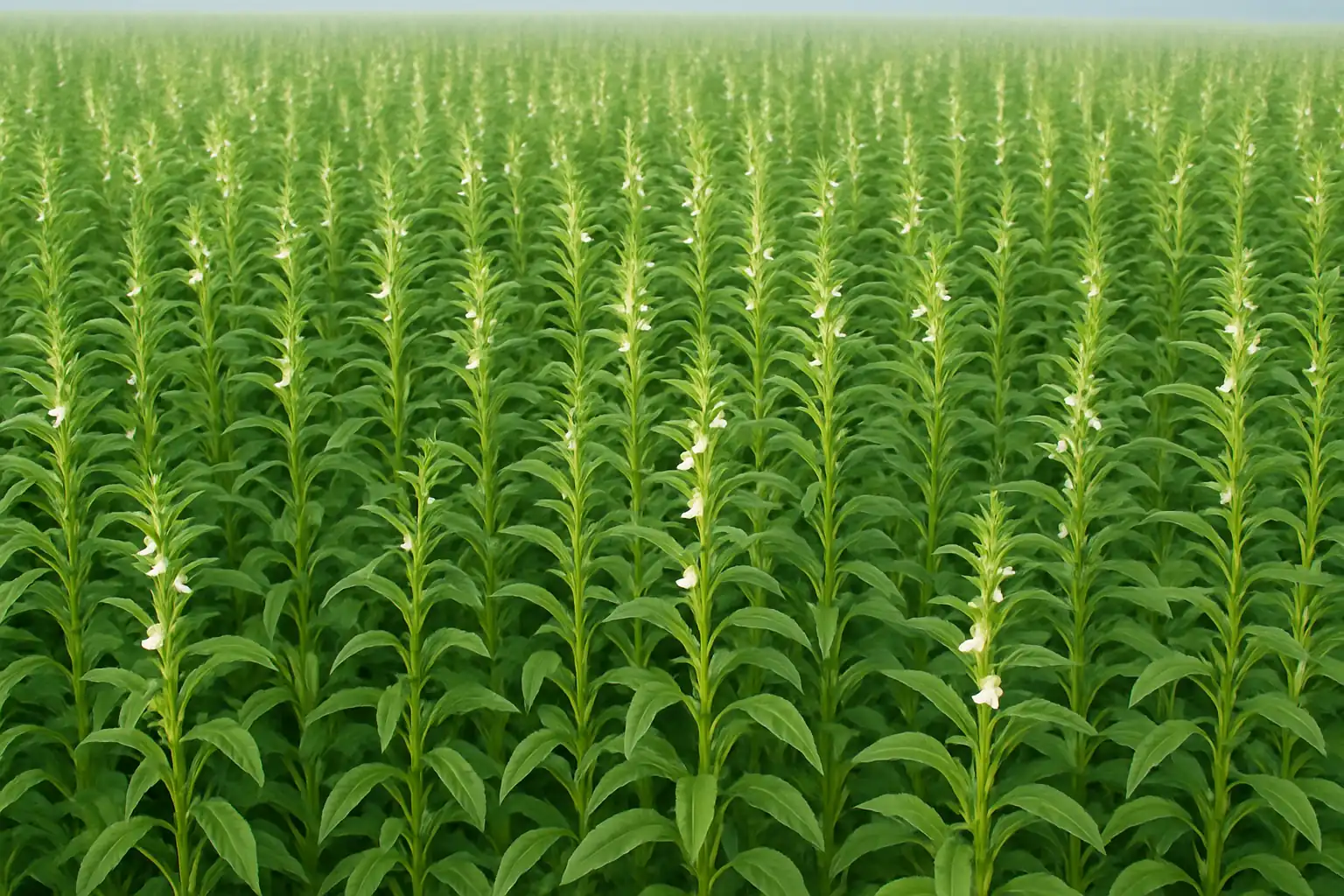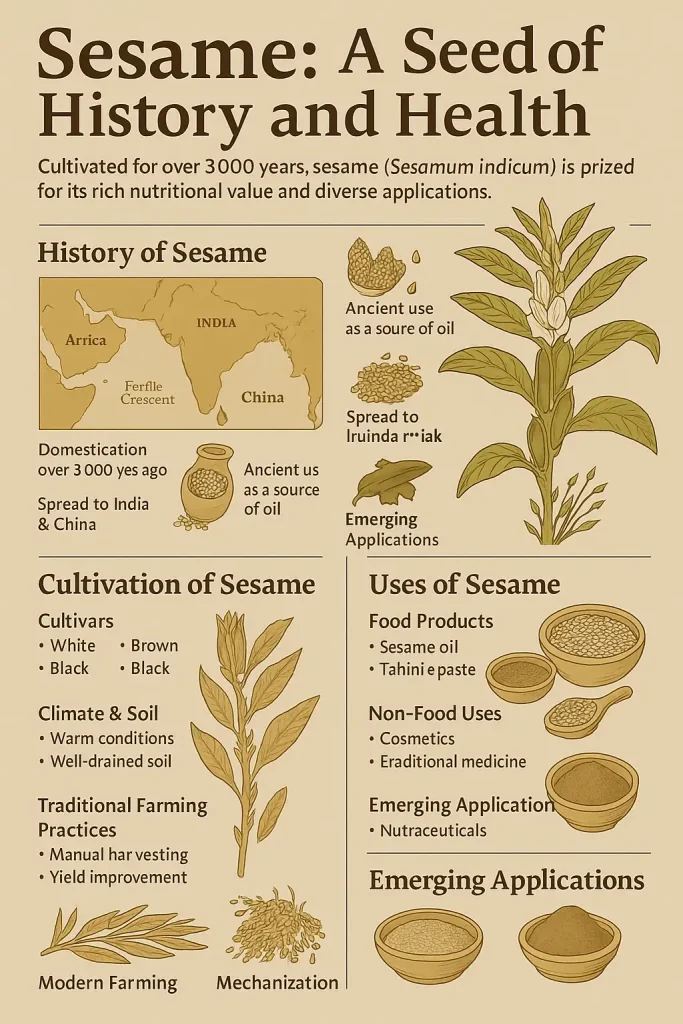Introduction
Sesame, a small but mighty seed derived from the Sesamum indicum plant, is one of the oldest cultivated crops known to humanity. Revered for its rich oil content and nutty flavor, this seed has been a staple in cuisines and traditional medicine across Asia, Africa, and the Mediterranean for millennia. Its versatility extends from culinary uses to health benefits, making it a valuable resource in both food and wellness. As a drought-tolerant crop, sesame thrives in challenging environments, supporting farmers in arid regions. This article delves into the history, nutritional profile, health benefits, and cultivation practices of this remarkable seed, highlighting its enduring significance.

Historical Background
The cultivation of this seed dates back over 5,000 years, with origins likely in India or sub-Saharan Africa. Archaeological evidence suggests sesame was domesticated in India by 3000 BCE, where it became a key source of edible oil. By 2500 BCE, Mesopotamians used its oil, known as “ilu” in Akkadian, for cooking and rituals. Ancient Egyptians valued sesame for its medicinal properties, while in China, it was used as early as 2000 BCE for ink and food. The seed’s durability and high oil yield made it a trade commodity along ancient routes, spreading its use to Greece, Rome, and beyond. Today, sesame remains a cultural and culinary cornerstone, with global production exceeding 6 million tons annually, led by countries like Tanzania, Myanmar, and India.

Nutritional Properties
This seed is a nutritional powerhouse, packed with essential nutrients. Per 100 grams, sesame seeds contain approximately 573 calories, 50 grams of fat (mostly unsaturated), 23 grams of carbohydrates, 12 grams of fiber, and 18 grams of protein. They are rich in minerals like calcium (975 mg), magnesium (351 mg), iron (14.5 mg), and zinc (7.8 mg), alongside vitamins B1 and E. Sesame seeds also contain lignans, such as sesamin and sesamolin, which act as potent antioxidants. The seed’s high oil content, about 50%, is composed of heart-healthy monounsaturated and polyunsaturated fats, including oleic and linoleic acids. These nutrients make sesame a valuable addition to balanced diets, particularly for plant-based eaters.

Health Benefits
The consumption of this seed offers numerous health benefits, supported by scientific research. Its high fiber content promotes digestive health, aiding in regular bowel movements and supporting gut microbiota. The lignans and phytosterols in sesame help lower LDL cholesterol and reduce the risk of cardiovascular disease. Studies show that regular intake of sesame seeds can decrease blood pressure in hypertensive individuals, thanks to magnesium and antioxidants. For people with diabetes, sesame oil may improve glycemic control by reducing fasting blood sugar levels. The seed’s anti-inflammatory properties, driven by sesamin, may alleviate symptoms of arthritis and other inflammatory conditions. Additionally, calcium and zinc support bone health, making sesame particularly beneficial for women post-menopause to prevent osteoporosis.

Cultivation Practices
Growing this crop requires careful attention to environmental conditions. Sesame thrives in warm, tropical, and subtropical climates, preferring temperatures between 25–35°C. It is highly drought-tolerant, making it suitable for regions with limited water, such as parts of Africa and South Asia. The plant grows to about 1 meter, producing small, bell-shaped flowers that develop into pods containing the seeds. Soil preparation is critical; well-drained, sandy loam soils with a pH of 5.5–8.0 are ideal. Farmers must clear weeds and ensure proper drainage, as sesame is sensitive to waterlogging. Seeds are sown at a depth of 2–3 cm, spaced 35–45 cm apart, often after the first rains. The crop matures in 90–150 days, with pods harvested before they split to prevent seed loss. In Iran, provinces like Khuzestan and Fars are key production areas, benefiting from the plant’s resilience.

Leave a Reply